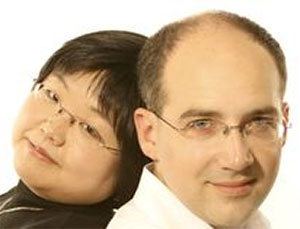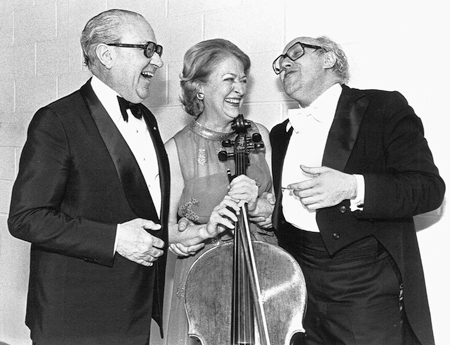by Daniel Hathaway

The program will include Ginastera’s Pampeana No. 2: Rhapsody for Cello and Piano, Op. 21; Cinco Canciones Populares Argentinas, Op. 10; Pueña No. 2 (Hommage à Paul Sacher for solo cello); and the Cello Sonata, Op. 49; as well as the world premiere of Mark Kosower’s In Memory of Aurora Ginastera.
“The first Ginastera piece I was ever exposed to was the Pampeana No. 2,” Kosower said. “I was an undergraduate at Indiana University studying with Janós Starker. I liked it so much I played it on a number of concerts. Then at Juilliard I studied the Sonata and the solo piece, the Pueña No. 2, both of those written in the composer’s later musical language. I felt a real connection with his music, and from then on I was a Ginastera person,” Kosower said.
Kosower was never able to meet the composer himself, who died in 1983 in Switzerland, “but my wife and I performed the Sonata and his other works all over the place,” he said. “We made a recording in Germany, and I sent a copy to his widow, the cellist Aurora Natola Ginastera. I didn’t hear anything for a month until one day I got call from Geneva. She apologized, saying that her CD player had broken down. She told me that I felt the same affinity for the music that she did.”
Aurora invited Kosower and Oh to Geneva, and wanted to hear them play. “She took us into Ginastera’s studio and to his piano, then left the room, listening from afar. Afterwards, she said, ‘You understand.’ We had a nice lunch, and I told her I’d be playing her husband’s Second Concerto with the Bamberg Orchestra, but I was performing it off the score because I didn’t have a cello part. She gave me one of hers, along with the score and cello part of his First Concerto. We started talking about recordings, and she encouraged me to record both concertos, which I did on the Naxos label. We visited her again in the second half of 2008, but then she passed away in January of 2009. My In Memory of Aurora Ginastera attempts to capture her spirit.”
Mark Kosower said that he did a lot of composing in childhood and early adulthood, but had less time to do that when his career heated up. “I decided to do the playing part now, and then when the arthritis kicks in I’ll be able to move a pencil easier than vibrating on the cello.”
Kosower said he had hoped that Aurora would have talked more about her husband’s music during their two meetings, but that getting together with her was a general affirmation of the spirit of the music. “Pampeana No. 2 is his only piece that was not written for her. He signed the Sonata ‘to my love Aurora.’ The pieces were all about their intense relationship. She personified all the different personalities of the music.”
Alberto Ginastera lived in the U.S. twice — from 1945-1947 when he studied with Aaron Copland, and again from 1968-1970 before moving to Europe. In his early years, he derived much of his inspiration from folk music. “Like Bartók, he took the indigenous music of Argentina, Peru, and Bolivia, and created his own folk music,” Kosower said. “He started out as a nationalistic composer, but became international in his last, neo-expressionism period. His is a truly original voice. I find his music has such an immediate appeal. It features driving Latin rhythms but he also had such a melodic gift as well.”
Published on ClevelandClassical.com September 20, 2016.
Click here for a printable copy of this article




